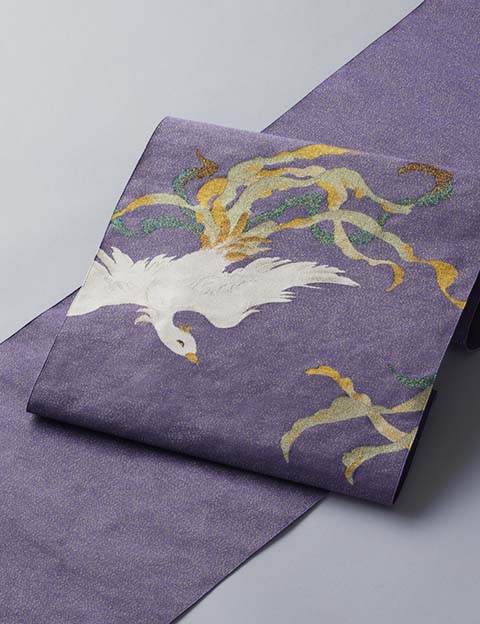NISHIJIN Ori (Textiles)

These textiles are known as Nishijin because weavers settled in an area that was headquarters of the west camp, or Nishijin, at the time of the Onin War. Lasting eleven years, this war took place during the Muromachi period (1392-1573) from 1467 to 1477, when lords from many provinces divided into east and west factions.
However, the history of Nishijin Ori textiles can be traced back to weaving techniques fostered by the Hata family before the Heian period (794-1185). They developed a weaving art through accumulation of skills centered on Kyoto’s imperial court culture.
Nishijin Ori are yarn-dyed figured cloths made in relatively small amounts. Yet they offer many different products, including a tightly woven tapestry cloth, damask, brocade, ikat and pongee. The multicolored figured cloths boast a particularly rich and dazzling use of fine yarns to produce equally rich patterns. Many of these are made into kimono, obi sashes and tapestries.
Feature
The main characteristic of Nishijin Ori is the principle of “as many different kinds of yarn-dyed figured fabrics as possible, made one piece at a time." The types of silk cloth made ranges from tapestries to brocades, satin damasks, satin with raised figures, splashed patterns, pongee (unevenly spun silk), etc. Figured fabrics made with multicolored yarn boast particularly gorgeous and elaborated yarn patterns.
How to make
Nishijin Ori are yarn-dyed figured fabrics featuring woven patterns made with dyed yarn. A large number of steps are required to produce the finished products. The manufacturing process is based on division of labor, so that each step is performed manually by professionals. The whole process can be divided into the following stages: planning, pattern making, preparation of raw materials, preparation of looms, weaving and finishing.

